Succulents are getting more and more popular as ornamental plants in modern interior decoration themes, among collectors, and landscapers. The beauty of succulents is mainly because of their unique geometric shape and the thick green or colorful structure of the leaf or stem. They are easy to grow and require low maintenance. Succulents benefits are help in purifying the indoor air and some also release oxygen during the night, therefore, can be used as a bedroom plant.
What are succulents?
A succulent is any kind of plant having a thick organ whether it is a leaf or stem or another part that stores water in them. This kind of adaptation is mainly to survive the hardy dry environment.
There are around 12,500 species of succulents spread all over the world compromising about 3% of total flower-bearing plants (1).
Succulents benefits
Yes, succulents not only add up to the aesthetic value of a home but also add up to our health by providing clean air. Some of the succulents benefits are
1. Improve indoor air quality
Many succulents of the Sansevieria family snake plants and other types like Jade plants help in improving indoor air quality by absorbing many harmful pollutants like benzene, formaldehyde, xylene, and toluene.
2. Release oxygen
Succulents can also be used as bedroom plants as they release oxygen during the night. Plants like aloe vera and snake plants can be used to keep the indoor bedroom air fresh and clean.
3. Helps in relaxing
Succulents also help in concentrating and calming the mood. Therefore succulents act as a mood elevator. Because of their unique appearance, it give a good vibe to the indoor and soothes the eye as well as mind.
How to take care of a succulent?
1. Light
Succulents require bright light. Sometimes it will be good if we keep them in the shade as it protects their leaves from getting bleached. If you have succulents in your rooms or bathrooms try to keep them near windows where there is direct light. Again I think it depends on the type of succulent or simply periodical switching of succulents in light and shade will be good.
2. Temperature
Succulent is more temperature tolerant than any other plant. Succulents grow well in cold temperatures. But be careful from frost as it may turn the leaves of succulent into yellow or rot them leaves.
3. Fertilize
Fertilize once a year preferentially during summer. Liquid fertilizers can be used monthly with ¼ strength. Fertilize the next day after watering during the growing season.
4. Watering
Succulent look like they can survive in very little water as they are well adapted for a dry environment. But in fact, succulents need a generous watering but not regular.
Therefore if you are watering a succulent make sure that you give plenty of water but do not overwater it. But yes after that should wait until the top soils get dry. As regular water rots the roots of succulents. The following points should be kept in mind before watering a succulent
- Before watering make sure that the soil is dry and then irrigate it properly until water sip down the pot. Drain the stagnant water under the pot.
- Do not spray water over the succulents as it also causes damage to the leaf or stem of succulents.
- Use good aerated sandy soil with mulch or peat on the top. Clay soil does not let water flow properly thus causing the rotting of roots.
Some of the common succulents
1. Echeveria imbricata
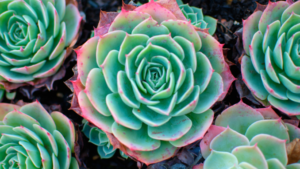
This succulent can be grown both as an indoor and outdoor plant. Requires moderate water and fertilization once a year. Non-toxic to animals and humans. Grows up to 15-20 cm commonly known as the blue rose.
2. Sansevieria trifasciata
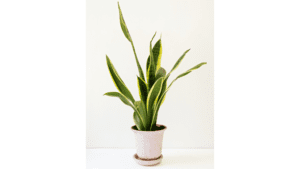
This succulent is or Sansevieria family. It is a good indoor plant and also a bedroom plant. This plant helps in cleaning the indoor air and releases oxygen during the night. Require moderate water, medium light, and porous soil.
3. Sedum morganianum “Burrito”
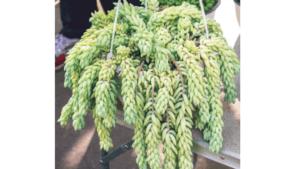
This plant is also known as burro’s tail. Can be grown both indoors and outdoors. Requires moderate sunlight and moderate watering. Non-toxic to cats, dogs, and children.
4. Aloe vera
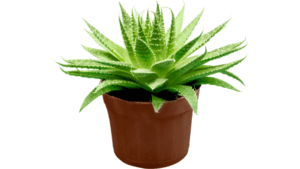
Medicinal succulent is grown as an outdoor and indoor plant. Requires a good amount of sunlight. Moderate watering periodically. Can be toxic to pets like cats and dogs and children. Purify indoor air and releases oxygen during the night, therefore, can be used as a bedroom plant.
5. Graptopetalum
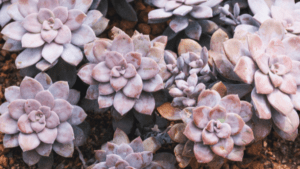
Indoor succulents required moderate sunlight. Watering once after completely drying the topsoil. Non-toxic to cats, dogs, and children.
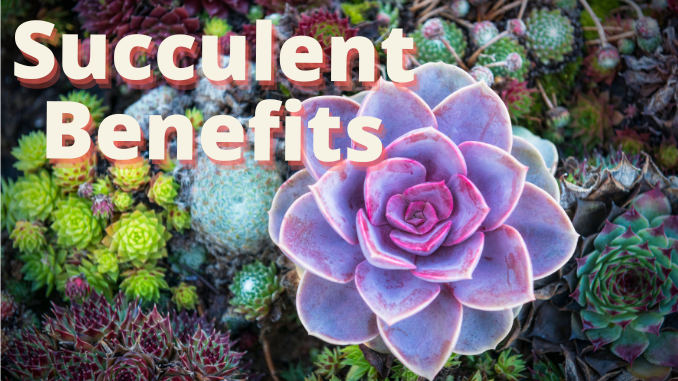
[…] in a wide range of varieties and cultivars. Purple pearl echeveria is one of the most attractive succulents. This plant loves sunlight so the more sun exposure it gets, the more colorful it […]